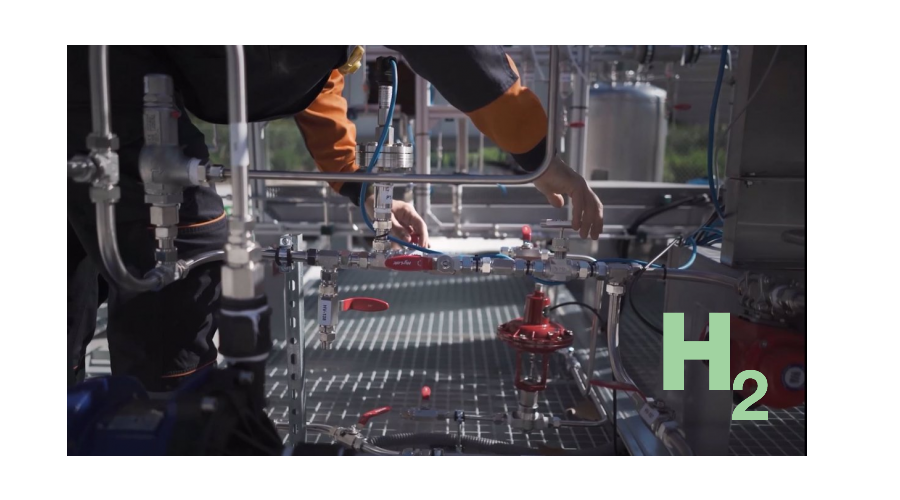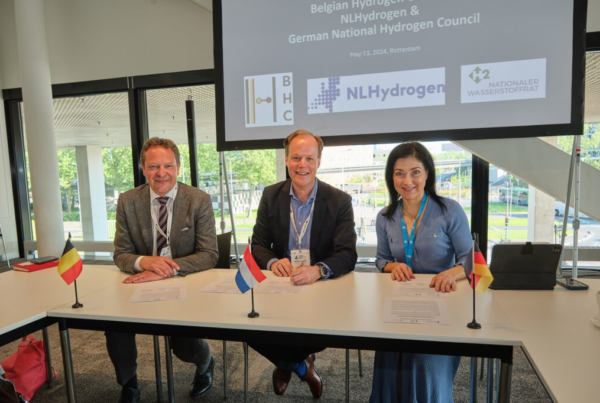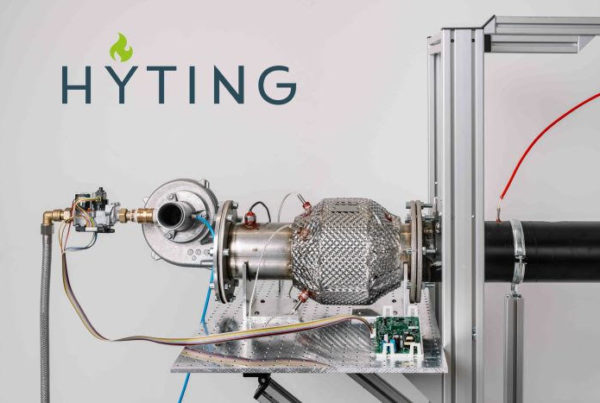
Enagás and Repsol have created ‘Sunrgyze’, a company owned 50% by each company, dedicated to the development, industrialization, scaling and commercialization of its own photoelectrocatalytic technology for the competitive production of solar hydrogen, an important step towards the decarbonization of the Spanish industry .
The competitive and large-scale production of renewable hydrogen to be used as an energy source will be key to decarbonization.
“Especially, due to its various applications as a source of thermal energy in mobility, intensive industry and in electricity generation, and because it allows the management and production of renewable energy, transport and storage of energy.”
As they explain, this new technology allows the direct transformation of solar energy into renewable hydrogen, through a photoelectrocatalysis plant.
“It is a novel technology, since it does not need external electricity, only water and sun,” says this entity that promoted the project.
What is unique and advantageous about this renewable technology is that it simplifies the production process with respect to electrolysis, the most widely used option for the generation of green hydrogen.
“In electrolysis, the energy to carry out the process comes from the sun or the wind. And the renewable electricity generated is transported to an electrolyzer where the water molecule is separated into hydrogen and oxygen.”
“Photoelectrocatalysis integrates the process in a single step since the device receives solar radiation directly and with a photoactive material the electrical charges that cause this separation are generated “, they detail.
It was Repsol Technology Lab that began its research on this photoelectrocatalysis technology in 2012, and a few years later, in 2018, Enagás joined the project, with an agreement that makes the two companies co-owners.
A “VERY DISRUPTIVE” TECHNOLOGY
Mónica Sánchez, PhD in Chemical Engineering and Hydrogen Coordinator at Enagás, highlights that it is a “very disruptive” technology, and that it is part of the company’s commitment to renewable gases – hydrogen and biogas / biomethane – “as key pieces “to achieve the carbon neutrality that the company aspires to achieve by 2040.
Precisely, the last step of this project has consisted of the construction of an operational and production pilot plant at the Repsol Technology Lab research center, in Móstoles (Community of Madrid).
“Progress is already being made in the scaling plans, with the construction of a demo plant that will start up in 2024 in Puertollano (Ciudad Real, Castilla La-Mancha), with an area of close to half a hectare and with a production of 100 kilos of green hydrogen per day “, they indicate.
In a later phase, scheduled for 2028, the installation of a plant, already in the industrial phase, of about 60 hectares and with a production that reaches 10 tons per day, also located in Puertollano.
A 100% SPANISH PROJECT LEADED BY WOMEN
From Enagás they emphasize that ‘Sunrgyze’ is an R&D project with “Spanish DNA”, and with a team of women at the helm. Some of the “most cutting-edge” Spanish research centers have also collaborated in it, such as the Energy Research Institute of Catalonia (IREC), the University Institute of Electrochemistry of the University of Alicante, the Aragón Hydrogen Foundation, as well as an engineering company specialized in innovative solutions, Magrana.
“The project shows a commitment to female researchers and is a clear example of the change in recent years in our role in large technological projects within the business world,”
Sánchez highlights, while stressing that for a few months this initiative has the support of the European Commission, which has approved part of its financing through the European ‘Innovation Fund’, “a stimulus for its implementation.”
The investment so far amounts to 8 million euros and both companies own the industrial property of this technology, which has resulted in 65 patent applications in more than 30 countries, of which 40 have already been granted.
ENAGAS AND RENEWABLE GASES
In turn, Mónica Sánchez, Enagás Hydrogen Coordinator, advances that, due to its strategic situation, Spain is expected to be one of the future exporters of renewable hydrogen to other European markets that do not have this potential in solar energy.
At Enagás they are aware of the essential role that the company can play in the integration and implementation of renewable hydrogen in the energy system.
“Hydrogen that can be transported by the existing network for distribution to the different points of consumption, thus being able to use the current infrastructure as energy storage for renewable electricity generation,” adds the company.
Enagás is currently involved in 55 renewable gas projects (34 for green hydrogen and 21 for biomethane).
“All of them meet common criteria: help decarbonisation, especially in the territories most affected by the energy transition; be tractors throughout their value chain; contribute to the development of Spanish industry; generate sustainable employment and they have to be carried out in collaboration with partners “, they point out from the company.
Source: EUROPA PRESS
Read the most up to date Fuel Cell and Hydrogen Industry news at FuelCellsWorks




